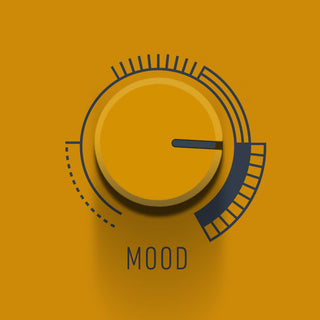The Rise of Synth Fuzz
Not all fuzz pedals are created equal. Some roar, some scream—but the most adventurous go further, blurring the line between guitar and synthesizer. Enter the world of the synth fuzz pedal: futuristic, harmonically rich, and wildly unpredictable.
This is fuzz as a textural instrument. Instead of just adding grit, it can sing like a synth, glitch like a modular, or transform your guitar into a pulsing, alien machine. Think oscillation, sub-octaves, ring modulation, and unpredictable harmonics—all fused into a wall of analog warmth and chaos you can still control.
The result? A modern fuzz guitar sound that feels less like an effect and more like a portal into new sonic dimensions.
A Brief History of Synth-Like Fuzz
Guitarists have long sought to break free from traditional tones. In the late '70s and early '80s, experimental players began stacking fuzz with octavers, modulators, and even synth filters to craft unnatural tones. Ring modulators like the EHX Frequency Analyzer, the Lovetone Ring Stinger, and gated fuzzes from ZVEX became tools for sonic rebellion.

Today’s modern fuzzes go further—offering glitch, sub-octaves, synth waves, and alien-like textures. But few combine this madness with analog warmth and real-time control.
Iconic Pedals That Live in This Realm
-
Zvex Fuzz Factory (chaos and oscillation)
-
EHX Frequency Analyzer
-
Death By Audio Robot / Interstellar Overdriver
-
Dwarfcraft Devices (e.g., Grazer)
-
Chase Bliss / Cooper FX hybrids (more digital)
Artists Who Embrace This Chaos
-
St. Vincent – “Rattlesnake”: Angular fuzz leads and synth-like modulation textures create a futuristic art-rock tone palette.
-
Tom Morello – “Revolver” (Audioslave, live): Fuzz with pitch modulation and ring-mod-like effects for synth-inspired solos and chaos.
-
Jonny Greenwood (Radiohead) – “The National Anthem”: Distorted bass and layered fuzz guitar emulate analog synth aggression.
-
Adrian Belew – “Elephant Talk” (King Crimson): Experimental fuzz textures and effects blur the line between guitar and modular synth.
-
Daniel Avery – “Diminuendo”: Guitars and synths processed with textural fuzz for ambient, layered distortion environments.
The Technology Behind Synth Fuzz Pedals
Traditional fuzz circuits rely on clipping transistors to create sustain and saturation. Synth fuzz pedals go further by combining fuzz with octave circuits, modulation, and voltage manipulation to produce textures that sound more like a synthesizer than a guitar pedal.
Many designs introduce sub-octaves or octave-up harmonics, gated transistors that produce glitch-like note decay, or even ring modulation layers that add metallic, robotic overtones. Others use oscillation and feedback paths to create tones that continuously evolve, blur, or collapse into chaos.
The result is a fuzz that doesn’t just distort—it reshapes your signal into waves, pulses, and harmonics, making the guitar feel like it’s part of a modular synth rig. This is why synth fuzz pedals are so popular in genres like industrial, experimental rock, noise, and ambient music: they unlock sounds a standard overdrive or fuzz could never achieve.
How It Works: Ring Modulation and Electric Mayhem
The MOOD Zone 5 of the MOHO engages a ring modulator circuit layered over a fully analog fuzz stage. The ELECTRICITY knob controls the frequency of the modulator—letting you sweep from subtle harmonic complexity to wild, robotic tones.
Combined with the FUZZ, TONE, and MOOD controls, this zone offers:
-
Cross-modulated textures
-
Sub-octave grit or upper octave swirl
-
Glitchy, synth-like break-up
-
Analog warmth beneath the madness
No two notes sound quite the same—and that’s what makes it inspiring.
How the Kernom MOHO Creates Synth Fuzz Tones
To unlock this sonic playground, set your MOOD fully clockwise to Zone 5 (3 to 5 o’clock).
Recommended Settings:
-
MOOD: 3 to 5 o’clock (Zone 5)
-
FUZZ: Medium to high (noon to max)
-
PRE TONE: Left for low-end throb, right for piercing sweep
-
POST TONE: Adjust to highlight modulation range
-
ELECTRICITY: Right = high-frequency ring mod / Left = lower, dronier effect
-
VOLUME: Set to balance or overload for effect layering
Pro Tips
🎛️ Want laser-sharp synth stabs? ELECTRICITY full right, MOOD max, POST TONE right.
🎛️ Want warm analog madness? ELECTRICITY left, PRE TONE left, FUZZ high.
Use MIDI to automate morphs live. Perfect for modern alt/indie.
🎥 Watch the Modern Synth Fuzz tone in Action
Here is the preset to get a Modern Synth Fuzz tone with the MOHO:

Tone Characteristics
|
Attribute |
Description |
|
Dynamic Response |
Reactive but unpredictable |
|
Compression |
Moderate with wave-shaping |
|
Frequency Profile |
Wideband with complex harmonics |
|
Texture |
Metallic, synthy, modulated fuzz |
|
Playing Feel |
Experimental, aggressive, expressive |
Perfect for post-rock, noise, electro-rock, industrial, ambient sound design, and synth-guitar crossover work.
Bonus: Control the Chaos
Use an expression pedal to sweep the ELECTRICITY or MOOD knob live—morphing from clean fuzz to sci-fi screeches or sub-octave wails. Assign via MIDI for synced glitch automation.
Before you go back playing
- Download the Modern Synth Fuzz Preset for the MOHO
- Watch the full tutorial to make the most of the MOHO
- Check out the MOHO Product page
- Discover our RIDGE (Multi-Overdrive) and the ELIPSE (Multi-Modulation)
- Subscribe to our Newsletter: Weekly presets & inspiration
Follow @Kernomofficial for more pedal insights.

by David Joly
David is a passionate musician whose main instrument is drums, but he also plays guitar and keyboards. With experience both in the studio and on stage, he combines his engineering and marketing skills to inspire today’s musicians.
